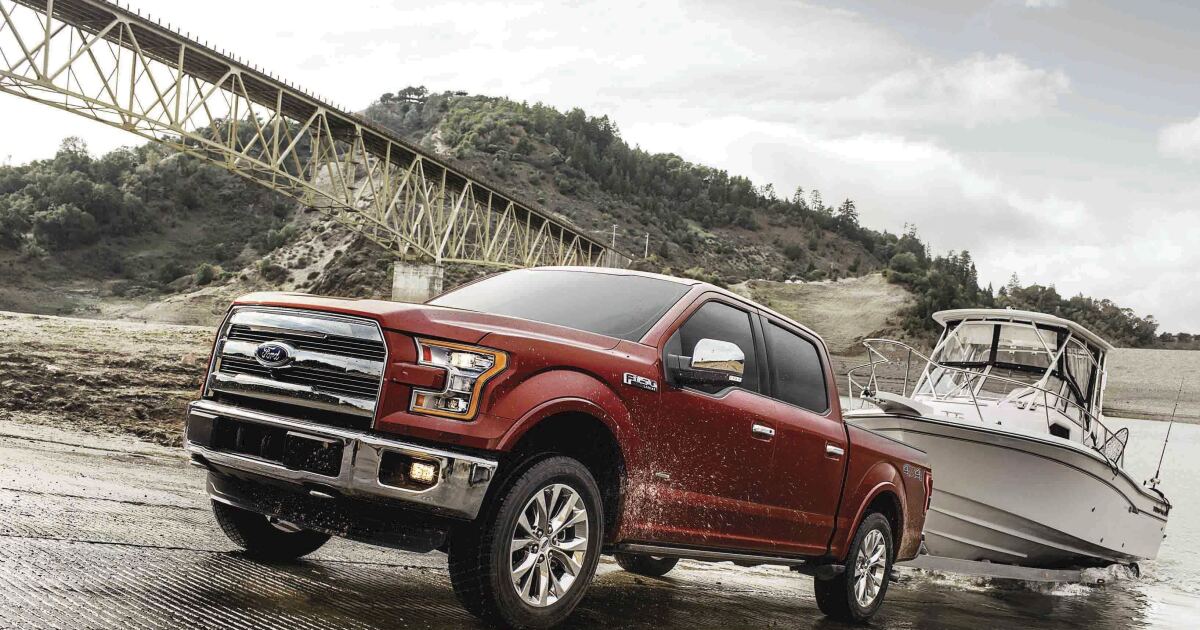
The pandemic economy has favored the well-off and made life miserable for the working poor. New motor vehicle sales for 2020 reflect that bifurcated reality.
The automobile industry has been “much more focused on higher priced products and more affluent customers” since the pandemic hit, Charlie Chesbrough, senior economist at Cox Automotive, said in the firm’s 2020 year-end wrap-up, delivered online Friday.
Cars and trucks with price tags of $50,000 and over gained market share while the segment comprising new vehicles costing under $30,000 took a big hit, he said.
At one end of the market, affluent buyers benefiting from a stratospheric stock market and the ability to do high-salary work from home went on a car and truck buying spree last year. At the other end, layoffs hit the working class hard, especially those in service industries that require face-to-face contact. That pushed new car buying way down the priority list for those potential buyers, Cox statistics show. And many of those with jobs but low incomes found it harder to get financing, the market research firm said.
Auto industry leaders feared the worst when the pandemic first swept the U.S. early last year, but the so-called K-shaped nature of the economic aftermath helped cushion the impact.
Car and truck sales did dive in 2020. About 14.5 million passenger cars and trucks were sold in the U.S., down from 17 million in 2019, a 14.7% drop. But the increase in sales of higher margin trucks and SUVs, and the willingness of affluent buyers to load up on options including driver assistance features such as adaptive cruise control, eased the pain for automakers. The average price of a new car topped $40,000 in December for the first time ever.
“The vehicle price issue suggests the typical customer of a new vehicle is becoming even more affluent and is more insulated from the pandemic,” Chesbrough said. In 2020, 23% of cars and trucks sold were priced below $30,000, compared with 28% the previous year. Vehicles that cost above $50,000 were 28% of the market last year, up from 26% in 2019 and 12% just five years ago.
Those flush with disposable income spent money on durable goods that might otherwise have been spent on vacations, restaurants and other service-industry goodies, according to Sung Won Sohn, professor of finance and economics at Loyola Marymount University.
“As people spend less on services and more on things, there has been greater demand for goods like appliances, furniture and household repairs, boosting manufacturing and construction,” he wrote in his monthly jobs report. “Unfortunately, the K-pattern won’t go away even when the spring arrives. In order to reduce the hardship of the service workers, more help from the government is needed.”
Every automaker saw a U.S. sales decline in 2020 except Tesla, Alfa Romeo and Mazda.
However, Cox analysts noted that 2021 will test Tesla’s astounding stock price and market value (about $821 billion on a price-earnings ratio of 1,657).
With a flood of competing electric cars from nearly all major carmakers to hit the market in 2021, “new competition will slow Tesla,” said Cox analyst Michelle Krebs. “In 2021, there will be EVs in more shapes, sizes and prices.” Cox has warned about Tesla competition before, she said. But, “we mean it this time.”
"many" - Google News
January 09, 2021 at 06:00AM
https://ift.tt/38tUCQm
Many couldn't buy a car in 2020, but the rich had no issues - Los Angeles Times
"many" - Google News
https://ift.tt/2OYUfnl
https://ift.tt/3f9EULr
No comments:
Post a Comment